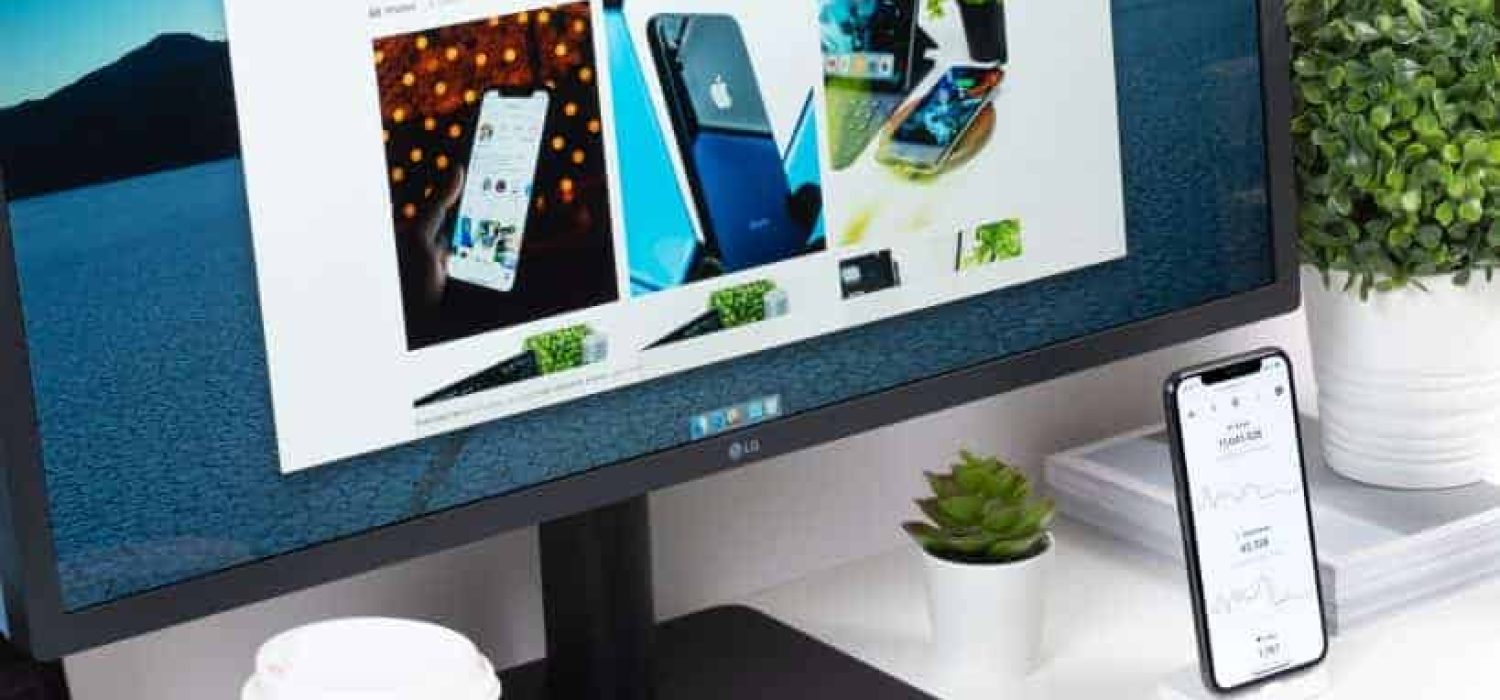Every business needs a website. It might be sleek and sophisticated, fun and bubbly, or simple and understated. Whatever feeling fits your brand is usually what web designers stick with, but there’s more to having an effective website than just how it looks. Your website also needs to be accessible. This means people should be able to easily navigate your site and view your content no matter what type of device they’re using. More and more people are using their phones and tablets as their main computer these days, so if your website doesn’t adapt to those formats, you could get left behind.
Designing for Desktop
Before we tackle the tough tablet and phone issue, let’s look at the traditional way people designed websites. Desktop web design is the building block on which all other forms of design will rest. If your desktop design is less than optimal, then odds are your content won’t be able to seamlessly fall into other formats.
Some trends that are cropping up in the digital design world are driving great success on business’ websites. One of these is the layout. A fixed web layout used to be standard in design so customers could scroll and see new information, then a more fluid design with multiple options in one space became the norm. Now both of those are on their way out and people are opting to let the site move with the user. As your customers scroll things like the “buy now” button or your website’s header might follow them down the screen.
Grid layouts are also becoming more and more popular as people try to fit as much information above the fold as possible. Having tiles that link out to your different services and products can put more information in front of users without all the overwhelming details that might cause them to click away.
Designing for Tablets
When your website moves over to a tablet, there are some key functional differences. For one, the screen size will be smaller, so your content should be capable of scaling so that it’s still easily readable and the layout is easy to navigate. The benefit here is that although a tablet screen is smaller than your average desktop, it functions relatively the same, so you don’t have to make any major adjustments.
One thing to look out for in tablet design is the pinch to zoom feature. People will instinctively use this motion to zoom in on areas of your website they want to further examine, but zooming in on your text could muddle their overall navigation. That’s why most experts recommend you disable pinch to zoom on the website itself, but still allow it on pictures on your site. This lets people zoom into the details they need to see without compromising the design of your text.
If you’re worried about people not being able to easily read your content, then you can always add in a text size feature on your webpage. This allows people to easily change the size of your font from their URL bar on the tablet. It can help to ensure everyone can easily read your website without worrying about messing up your usability.
Designing for Mobile
There are plenty of pros today who advocate for designing your website for mobile first and letting the other two options fall into place. If you choose to go this route, then there are a few things you should know about designing for mobile sites. The first thing to consider is the size of the screen. Most mobile phones are relatively small when compared to a desktop, so you don’t want to pack your site with tons of extra information. Keep it simple and easy to navigate.
You can choose to make your website responsive or adaptive to mobile. Responsive means your website will look the same on a phone as it does on a computer, but with things to scale of course. Adaptive means your site will look different on mobile and play to all those strengths to make the most of people looking at it through their phones. To maintain brand continuity, most businesses choose the responsive approach, but there’s a time and place for both.
Once your site is ready to roll, there are a few things you can double-check before your launch. First, are all of the links working and compatible with touchscreens? People will want to tap on your links and be immediately redirected so be sure they’re working properly. You also want to make sure users can easily scroll with their thumb from the very top to the very bottom of your page with ease. This can help encourage them to explore all of your content instead of stopping short.
Creating a Versatile Site
So how do you combine all these three versions of a website into just one design? Do you need a different website for each platform? Of course not! All you need is a responsive site that can adapt on its own to any size screen or device.
Creating a responsive website is all about using adjustable grid systems. If you can lay your content out on a predictable grid, then the computer can easily shift, move, and adjust items as needed to fit a variety of screen sizes. This takes away the problem of things needing to shrink or be removed to fit on tablets and phones and automatically allows your site to shine on any device.
Creating and designing a website can be hard work and there will inevitably be lots of decisions that have to be made. If you’re working with a professional company, then odds are they’re clued in about the ins and outs of the design process. But if you’re trying to do it yourself, you can keep these easy tips in mind to make sure you create a site that everyone can use no matter where they access it from. It’s as simple as choosing a responsive layout and letting the computer do the rest!





